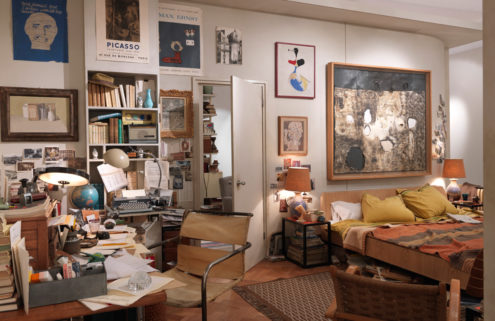This year, Frieze London’s displays feel less about stop-and-stare appeal, more about nuanced overall conception. Even Gagosian – usually the go-to source of attention-grabbing art – has dedicated its stand to a display of monochrome cabinets showing porcelain vessels by Edmund de Waal.
Many of the younger galleries in the Frieze Focus section have handed conception of the total space over to the artists themselves. Meanwhile, a suite of booths explore the origins of immersive installations, recreating influential and atmospheric exhibitions from the 1990s by the likes of Dominique Gonzalez-Foerster.
Here’s a glimpse of seven of the most engrossing exhibits within Frieze London.

Hauser & Wirth’s booth has been reimagined as a fictional artist’s studio, paying homage to the cliché of ramshackle, homely and inspiring spaces. Lovingly assembled by H&W’s own senior director Neil Wenman, works by many of the gallery’s artists have been hung and displayed higgledy-piggledy between easels, art materials and copper pendant lights. H&W describe ‘L’atelier d’artistes’ as ‘a tongue-in-cheek examination of the museological practice of reconstructing artist studios, and the tendency to exploit creative licence in the process’, incorrect French and all.
Photography: Rosella Degori / The Spaces
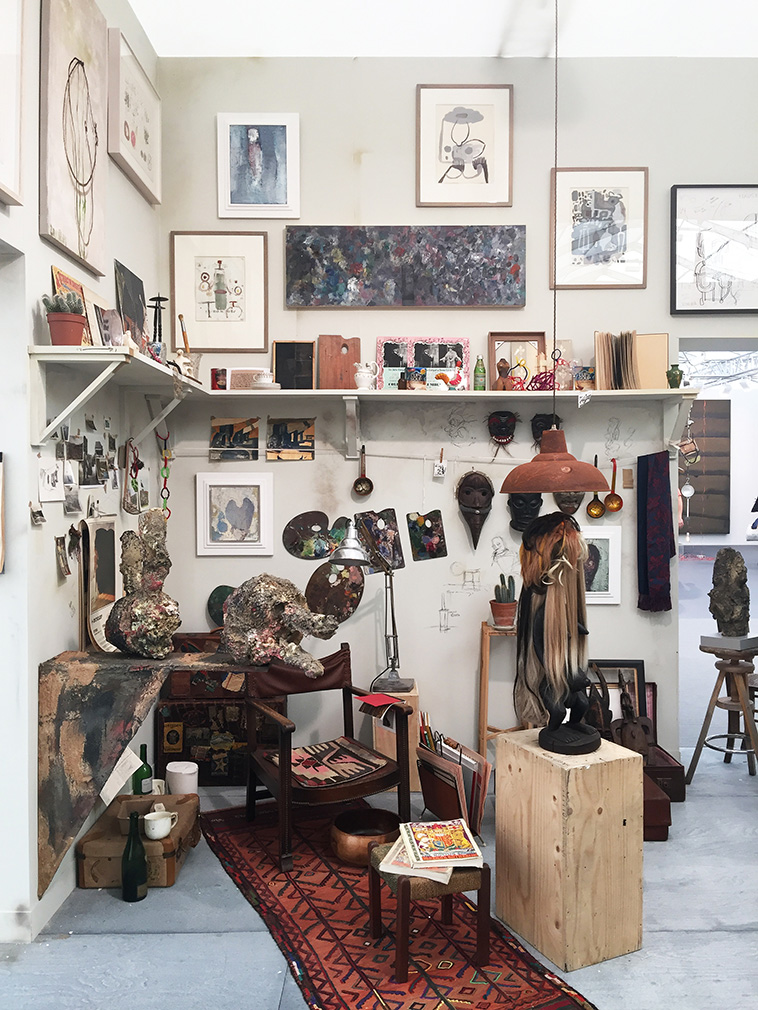
Hauser & Wirth’s booth has been reimagined as a fictional artist’s studio, paying homage to the cliché of ramshackle, homely and inspiring spaces. Lovingly assembled by H&W’s own senior director Neil Wenman, works by many of the gallery’s artists have been hung and displayed higgledy-piggledy between easels, art materials and copper pendant lights. H&W describe ‘L’atelier d’artistes’ as ‘a tongue-in-cheek examination of the museological practice of reconstructing artist studios, and the tendency to exploit creative licence in the process’, incorrect French and all.
Photography: Rosella Degori / The Spaces
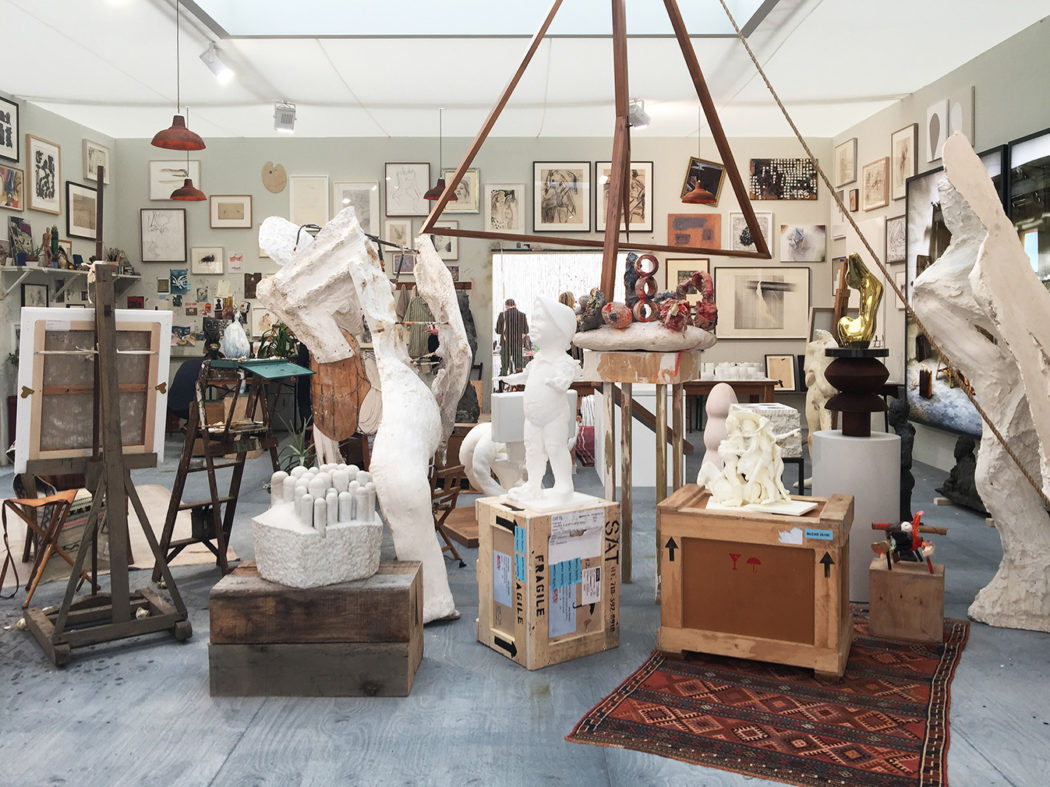
Hauser & Wirth’s booth has been reimagined as a fictional artist’s studio, paying homage to the cliché of ramshackle, homely and inspiring spaces. Lovingly assembled by H&W’s own senior director Neil Wenman, works by many of the gallery’s artists have been hung and displayed higgledy-piggledy between easels, art materials and copper pendant lights. H&W describe ‘L’atelier d’artistes’ as ‘a tongue-in-cheek examination of the museological practice of reconstructing artist studios, and the tendency to exploit creative licence in the process’, incorrect French and all.
Photography: Rosella Degori / The Spaces

For Southard Reid, artist Celia Hempton reshaped and decorated the booth walls, which look like shards of old marble or a pigment-streaked ruin. Inside, the classical theme extends to paintings of male nudes. While rather more explicitly rendered than works one might encounter in, say, the sculpture court of the Louvre, their delicate palette echoes the coloration of the walls.
Photography: Rosella Degori / The Spaces
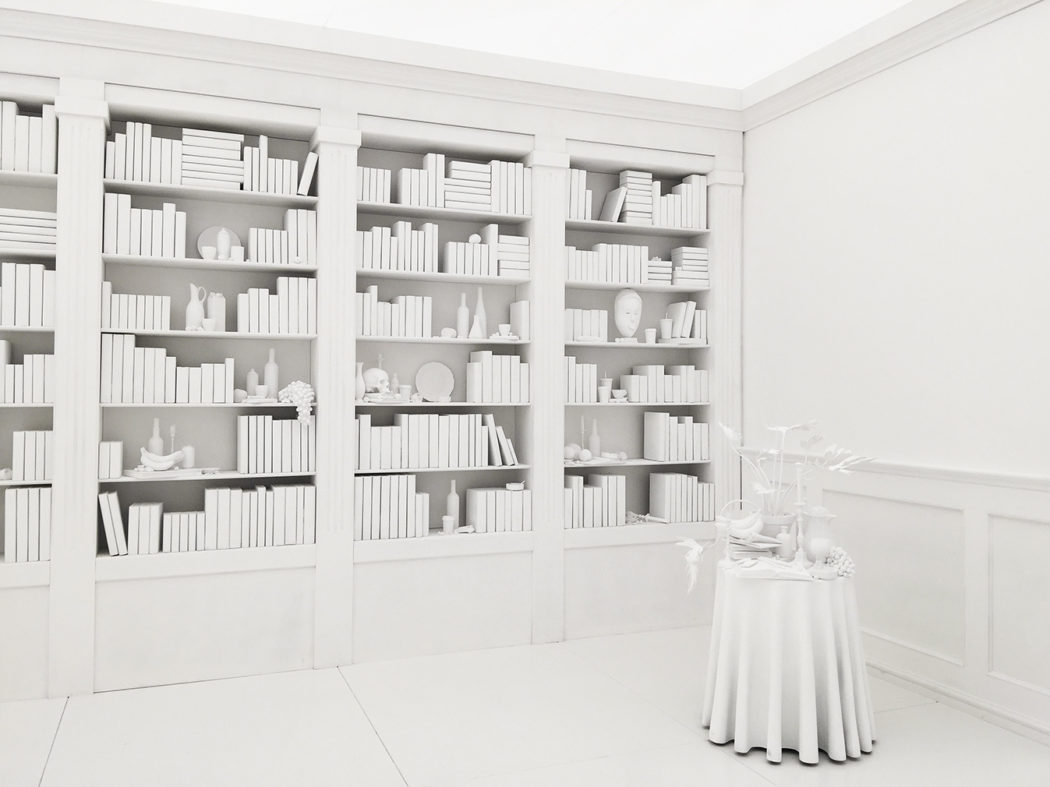
At Marianne Boesky, Hans Op de Beeck has created a miniaturised white version of The Collector’s House shown at Art Basel Unlimited earlier this year. Like the earlier version, it plunges visitors into a curiously petrified homestead lined with all the accoutrements of the aesthetic sophisticate, from books, to artworks to a topless trophy wife.
Photography: Rosella Degori / The Spaces
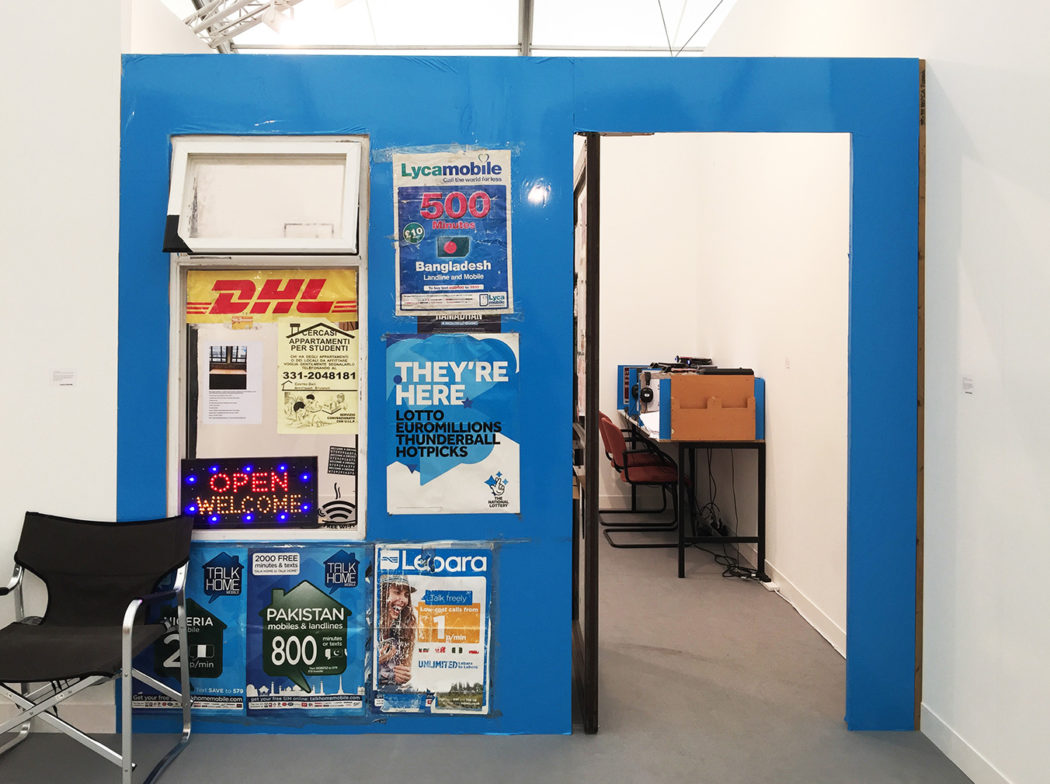
A rather more abject assemblage appears at Carlos/Ishikawa, courtesy of the Lloyd Corporation, who have turned the booth into an Internet café. Dressed with curling-at-the-corner adverts, and functioning monitors, the installation suggests life beyond the licensed, networked, trackable world.
Photography: Rosella Degori / The Spaces

A rather more abject assemblage appears at Carlos/Ishikawa, courtesy of the Lloyd Corporation, who have turned the booth into an Internet café. Dressed with curling-at-the-corner adverts, and functioning monitors, the installation suggests life beyond the licensed, networked, trackable world.
Photography: Rosella Degori / The Spaces
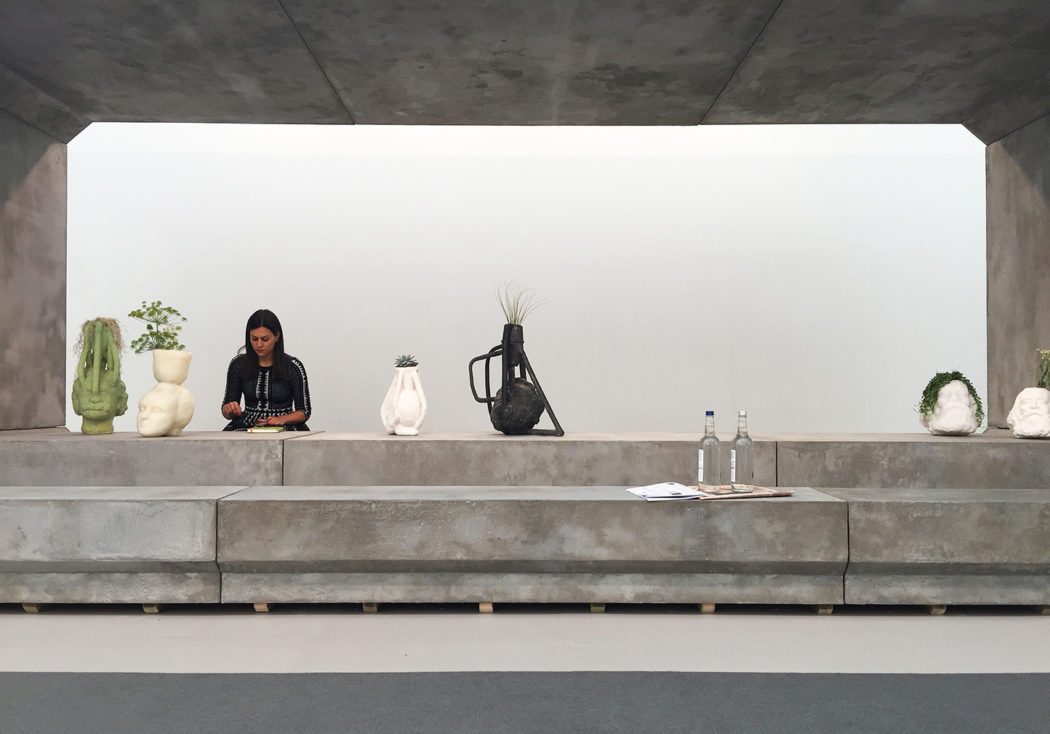
It’s time to talk at Galerie Rüdiger Schöttle, where Mira Calix and Goshka Macuga are promoting free and forthright intellectual exchange between thinkers in diverse fields. Conceived in response to divisive discourse that has emerged in Europe and beyond, the artists have created a sheltered concrete table and benches for performances and discussions.
Photography: Rosella Degori / The Spaces
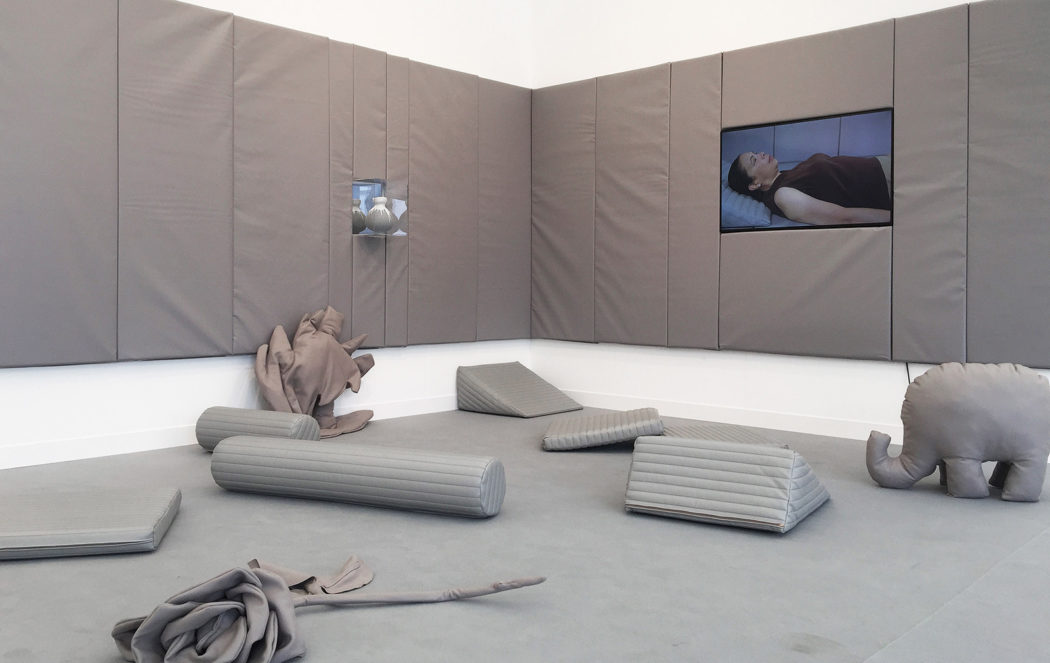
Speaking of forthright exchange, Liz Magic Laser has turned Various Small Fires into a primal therapy chamber, complete with padded walls and ‘screaming vases’ that muffle the sound of full-throated yelling. Soft grey versions of the emblems of various political parties – the elephant and donkey, oaktree and rose – are arranged on the floor ready to have politically inspired fury vented upon them.
Photography: Rosella Degori / The Spaces

Speaking of forthright exchange, Liz Magic Laser has turned Various Small Fires into a primal therapy chamber, complete with padded walls and ‘screaming vases’ that muffle the sound of full-throated yelling. Soft grey versions of the emblems of various political parties – the elephant and donkey, oaktree and rose – are arranged on the floor ready to have politically inspired fury vented upon them.
Photography: Rosella Degori / The Spaces
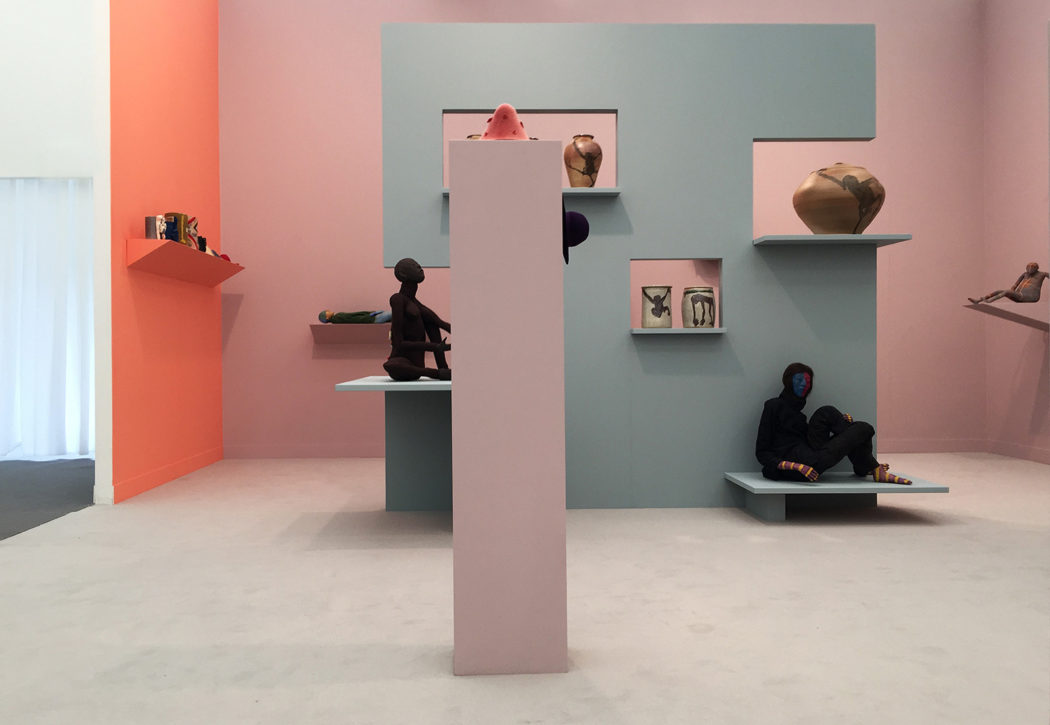
Francis Upritchard has arranged the Kate MacGarry booth as a softly coloured museum of civilisation, with faux ethnographic and early civilisation objects arranged on institutional style shelving. Upritchard explained earlier this week that her preference for coloured spaces for her work stems from an experience showing work in a richly decorated palazzo in Venice.
Photography: Rosella Degori / The Spaces
Read next: Is art best viewed beyond the gallery?

